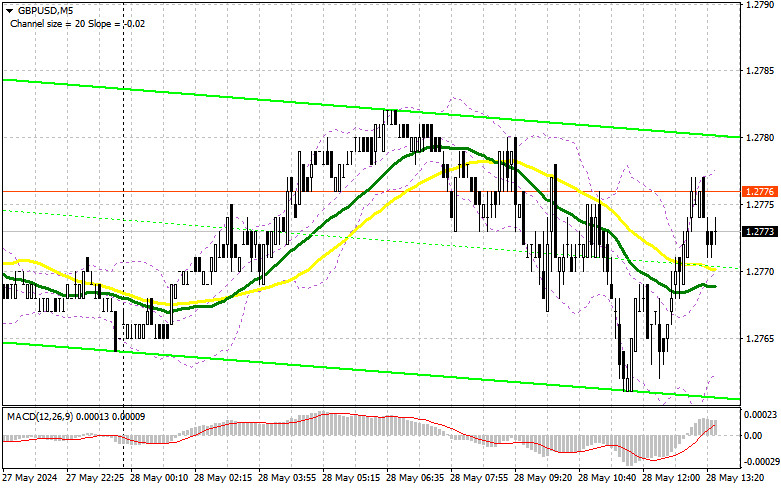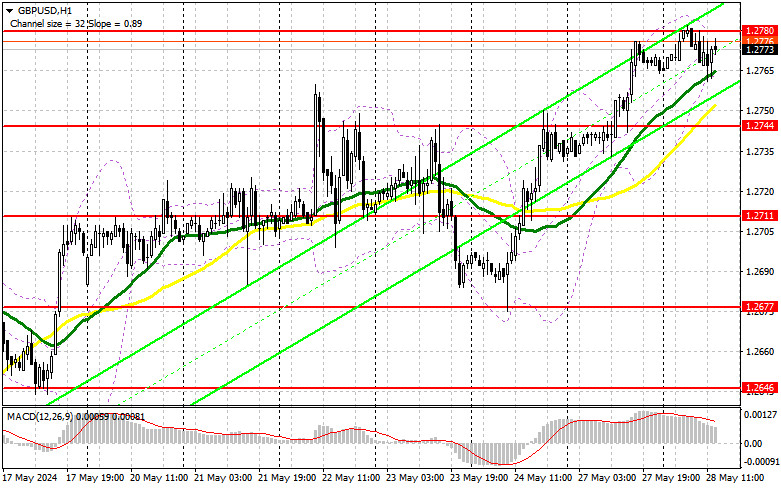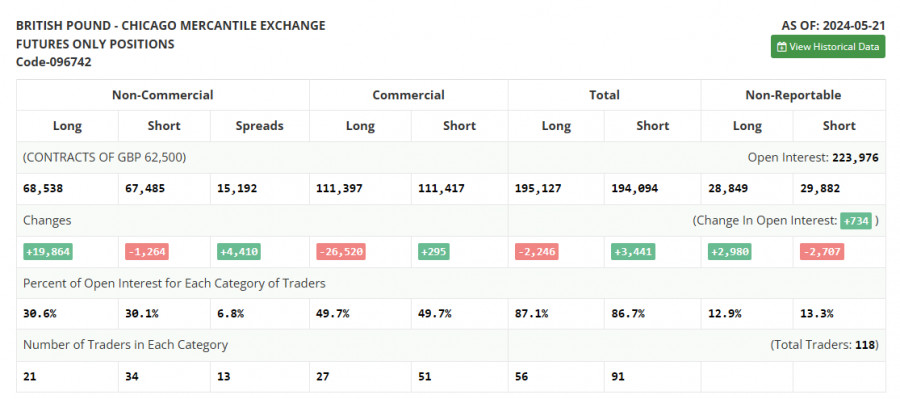
In my morning forecast, I paid attention to the level of 1.2756 and planned to make decisions on entering the market from it. Let's look at the 5-minute chart and figure out what happened there. The decrease occurred, but it never reached the test and the formation of a false breakout there. For this reason, I have not seen any suitable entry points to the market. In the afternoon, the technical picture was seriously revised.

To open long positions on GBP/USD, it is required:
The entire focus will now need to shift to important data on the US consumer confidence indicator, the fall of which may lead to a breakdown of the monthly maximum and a new wave of growth of the British pound. In the case of strong indicators, the first increase in consumer confidence in the United States this year, and good dynamics of the S&P/Case-Shiller housing price index in the 20 largest US cities, the pressure on the pair will increase. In this case, I will wait for the pound to decline and update the new support of 1.2744, above which the moving averages are located, playing on the buyers' side. The decrease and the formation of a false breakdown there will ensure that large players are present in the market, giving a good entry point into long positions capable of breaking 1.2780 – a new resistance formed at the end of the first half of the day. A rush and a top-down test of this range will determine the chance of GBP/USD growth with the 1.2817 update. In the case of an exit above this range, we can talk about a breakthrough to 1.2853, where I will fix profits. In the scenario of GBP/USD falling and no buyers at 1.2744 in the afternoon, the pressure on the pound will return, leading to a downward movement to the support area of 1.2711. Forming a false breakout will be a suitable option for entering the market. Opening long positions on GBP/USD immediately on a rebound from 1.2677 to correct 30-35 points within a day is possible.
To open short positions on GBP/USD, you need:
In case of further growth of the pair, which is more likely, I will act only after forming a false breakdown in the area of a new resistance of 1.2780. This will lead to an entry point into short positions to reduce GBP/USD to the support area of 1.2744. A breakout and a reverse test from the bottom up of this range will increase the pressure on the pair, giving the bears an advantage and another entry point to sell to update 1.2711, where I expect a more active manifestation of buyers. A longer-range target will be a minimum of 1.2677, negating all the bulls' efforts this week. I will record profits there. With the option of GBP/USD growth and the absence of bears at 1.2780 in the afternoon, which is more likely, buyers will strengthen the initiative by getting the opportunity to update 1.2817. I will also serve there only on a false breakdown. Without activity there, I advise you to open short positions on GBP/USD from 1.2853, counting on the pair's rebound down by 30-35 points within the day.

The COT report (Commitment of Traders) for May 21 showed a sharp increase in long and a reduction in short positions. Traders believe that the Bank of England will cut interest rates by the end of summer or the beginning of autumn this year, providing good support to the UK economy. Recent inflation data have indicated this possibility, but to complete the picture, the regulator wants to ensure that prices fall in all directions. The service sector remains a problem area, where prices are rising due to an increase in household wage growth. As soon as this component is put in order, there will be a reduction in rates, which will support the British pound and the UK economy in the medium term. The latest COT report says that long non-profit positions increased by 19,864 to 68,538, while short non-profit positions fell by 1,264 to 67,485. As a result, the spread between long and short positions increased by 2,109.

Indicator signals:
Moving averages
Trading is conducted above the 30 and 50-day moving averages, which indicates further pair growth.
Note: The author considers the period and prices of the moving averages on the hourly chart H1, which differs from the general definition of the classic daily moving averages on the daily chart D1.
Bollinger Bands
In case of a decline, the indicator's lower limit of 1.2765 will act as support.
Description of the indicators
• Moving average (moving average determines the current trend by smoothing volatility and noise). Period 50. It is marked in yellow on the chart.
• Moving average (moving average determines the current trend by smoothing volatility and noise). Period 30. It is marked in green on the chart.
• MACD indicator (Moving Average Convergence/Divergence — convergence/divergence of moving averages) Fast EMA period 12. Slow EMA period 26. SMA period 9
• Bollinger Bands. Period 20
• Non-profit speculative traders, such as individual traders, hedge funds and large institutions that use the futures market for speculative purposes and meet certain requirements.
• Long non-commercial positions represent the total long open position of non-commercial traders.
• Short non-commercial positions represent the total short open position of non-commercial traders.
• The total non-commercial net position is the difference between non-commercial traders' short and long positions.